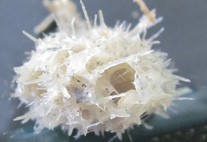Abstract
The richness of life in parts of the earth that to us appear inhospitable and remote never fails to fascinate scientists and non-scientists alike. The largest ecosystem of the planet, the abyssal plains of the world ocean, makes up about 90 percent of the seafloor and thus nearly 78 percent of the Earth’s surface, yet only a minor fraction of this huge environment has been investigated. Authors have questioned repeatedly “how many species would live on earth and in the ocean” (Mora et al. 2011; May 2011), and recent estimations predict ~ 8.7 million (+/- 1.3 million SE) eukaryotic species globally, with 2.2 million of these being marine (Mora et al. 2011). To date, 91 % of all marine species still await description. Other authors concluded that marine biodiversity is grossly underestimated (Bouchet 2006) because so far, only one-third of all species descriptions concerns marine biota (Reaka-Kudla 1997; Groombridge & Jenkins 2000, Grassle 2001, Boltovskoy et al. 2005). We know that marine live thrives even in hadal trenches (Jamieson et al. 2009), that biogeographic ranges in the deep sea are dynamic (McClain & Mincks Hardy 2010) and that the origin of the modern deep-sea fauna is ancient (Thuy et al. 2012). For example, the origin of Isopoda dates back to Permo-Triassic times (232– 314 mya; Lins et al. 2012).

